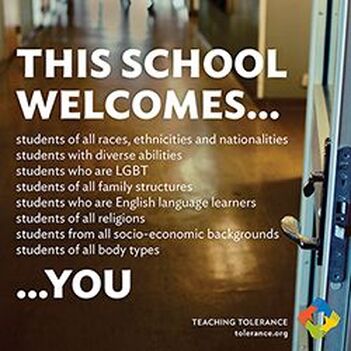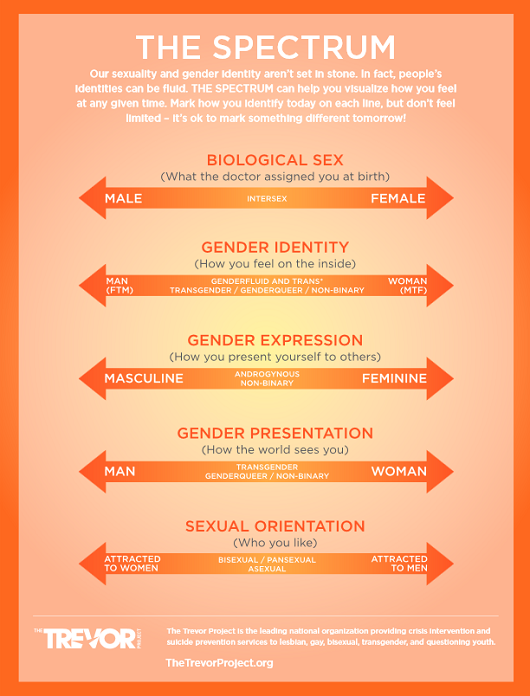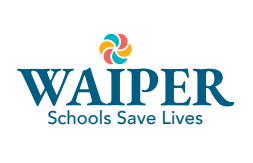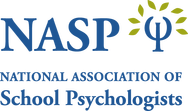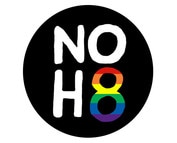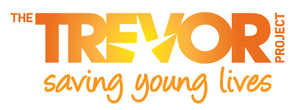Sexual Orientation & Gender Identity
|
LGBTQIA+ students, parents, and staff are present at all levels of education from preschool to graduate school. There is often push-back from administration and conservative families at discussing sexuality and gender, but the reality is that developmentally-appropriate discussions can and should happen from Pre-K-12th grade and beyond. It's a fallacy to think that LGBTQIA+ discussions are only about sex; while sex may be part of a relationship, it is not the basis for LGBTQIA+ identities.
SEXUAL ORIENTATION How old were you when you had your first crush? Most people are between the ages of 9-11, during their elementary school years. Whether a person's attraction is to the opposite gender, the same gender, or all genders, the developmental trajectory remains the same. Therefore discussions about attraction and healthy relationships should be taking place during the elementary years. It is important for young people to learn that attraction is a normal and healthy part of development. It can consist of physical attraction, emotional connection, and intellectual captivation. Children should learn about personal body safety, respect, consent, boundaries, and healthy relationships. Sexual orientation exists on a continuum from exclusively heterosexual to exclusively homosexual. A person may be straight (hetero), lesbian, gay, bisexual, pansexual, queer, asexual, etc. Additionally, sexuality is fluid and can change over time. GENDER IDENTITY Gender identity is distinct from sexuality. It develops during the preschool years and can be observed in children between the ages of 1-3. In observing young children you will notice that they categorize and stereotype gender roles at a young age. "I'm the girl so I'm going to be the mommy." "You can't be wear that dress; you're a boy!" As children begin to recognize gender and external sex characteristics, they may either identify with their body parts (or be indifferent about them) or resent them and experience dysphoria. This is not to say that a young boy who realizes that his mother does not have a penis and no longer wants one because he wants to be just like his mom is dysphoric, but a young boy who says they're a girl and has intense and disgust or disconnect from his penis *may* be a transgender girl. Gender dysphoria is intense discomfort or distress from one's sex-related characteristics. As such, pubertal-onset may be when a child experiences gender dysphoria and begin expressing a desire to transition (alter their appearance to correspond with their gender identity). Others still may not openly disclose their transgender identity until later in life. How do you know when a person is 'actually' trans? The truth is, you as the outsider, don't; it's not up to you to decide someone else's identity. That said, before any irreversible or significant changes are made the individual should be CONSISTENT, INSISTENT, and PERSISTENT with regard to their gender transition. People of all ages may undergo SOCIAL transitions (changes in dress, names they are called, pronouns used). Other forms of transition include: LEGAL transitions (changing their name and/or gender marker through their county and birth state) and MEDICAL transitions (hormone blockers, hormones therapy, and surgeries). |
|
|
|
The 4 C's
|
Schools can either be a place of safety or a place of insecurity and fear. They can be welcoming and inviting or they can places young people do not want to go. Young people spend a sizable portion of their lives in school and, as a result, schools have tremendous potential on impacting a student's trajectory for development, mental health, and life skills outside of standard academics. Some LGBTQIA+ students even rely on schools for affirmation and validation of their basic humanity if they go home to unsupportive homes. Research consistently shows that the presence of ONE supportive adult in a young person's life can be life-changing and life-saving. Imagine the potential impact of every person in a school being supportive. Schools have the potential to change statistics and decrease the suicide rate for LGBTQIA+ youth from 40% to none.
In order to learn in school, a student must be able to feel both physically and psychologically safe. What goes into those two factors? CULTURE, CLIMATE, CURRICULUM, and COUNSELING. School Culture - "That's just the way we do things here..." "The ____ (school name/mascot) way." School culture is made up of the expectations of a school which are defined by what is valued. This results in shaping patterns of behavior, attitudes, and expectations of both students and staff It is founded in what a school believes and considers to be important. School Climate - The attitude of an organization. The collective mood, or morale, of a group of people (includes students and staff) . School climate creates the feel of the school. According to the National School Climate Center, “school climate includes major spheres of school life such as safety, relationships, teaching and learning, and the environment as well as larger organizational patterns (e.g. from fragmented to shared; healthy or unhealthy) (National School Climate Center, 2013)). Changes in school climate will be seen faster than changes in school culture. School climate is shaped by the behavior of students and staff. Inclusive Curriculum - An inclusive curriculum is one which reaches every student in the classroom. It is one which provides students of all backgrounds with the equal potential to learn and achieve, An inclusive curriculum allows students of all races, religions, ethnicities, genders (identities, orientations, and presentations), sexualities, and abilities to both see themselves in what they are learning and in the staff around them. Affirmative Counseling - There are 'issues' which affect LGBTQIA+ youth. They may experience confusion, discrimination, internal and external conflict, isolation, rejection, harassment, abuse, or eviction. All of these factors can impact a student's mental health and well-being. Affirmative counseling validates people. It meets them where they are at, recognizes their courage in sharing, and supports them in their journey of discovery and acceptance. WAIPER Schools
&
WAIPER Schools (Cannava, Davidson, Kiperman, Lorig, Paff, Schanding, & Taylor, 2021) are schools in which every student, staff, and family member feels valued, desired, and like they belong. The schools are Welcoming, Affirming, Inclusive, Proactive, Equitable, and Responsive, Image Credit: Jillian Morrison WELCOMING - How does your school welcome and invite people into the building? Does the physical environment and decor make people want to be there? Simple changes like signs from NASP, HRC, Learning for Justice (formerly Teaching Tolerance), and The Trevor Project can make people feel welcome.
AFFIRMING - Affirming schools are those that believe kids. They listen without judgement, they support students where they're at, they believe students, and they recognize and respect that only the individual gets a say in how they identify and to whom they're attracted. Young people are often questioned by adults who falsely think they 'know better.' The truth is whether or not you suspected that a student was gay or trans doesn't change whether or not they are. Identity and orientation both develop over time and people can spend a lifetime figuring out who they are. Trusting kids and listening to what they say results in far more positive outcomes for young people than doubting their existence. INCLUSIVE - Think back to how you felt in school when everyone around you got invited to a party or dance and you felt like the only person who didn't. How did that make you feel? Being included, especially during childhood and adolescence reinforces one's validity and value. Inclusion makes people feel seen and valued. In an inclusive school, all students, staff, and family members feel that they belong, that they are appreciated (not just accepted), and that they are an integral part of the school community. Students see staff members who look like them, they learn about topics and people they can relate to, and they feel that lessons apply to them. PROACTIVE - Proactive schools are those that foresee challenges and take steps to remedy them before problems arise. They look to the future and plan for such in the present. They have gender neutral and single stall restrooms available for all students at all times rather than waiting for a transgender student to enroll or a current student to come out/transition. They have policies in place which prohibit homophobic and transphobic language, harassment, and microaggressions. They educate staff about LGBTQIA+ youth and issues which affect them. They have systems in place to allow students to change their name without going through the courts - both in the classroom and online. Cisgender students and staff share pronouns and honor the pronouns of gender diverse persons. Proactive schools aren't perfect, but they recognize that planning prevents many potential problems. EQUITABLE - Equitable schools are those which provide everyone with access to opportunities, they make everyone feel seen and valued, and they are focused of giving individuals what they need rather than getting stuck in a 'one-size fits all' philosophy which leaves some people behind. In an equitable school, 100% of students, staff, and families feel that they have the opportunity to learn, grow. and develop. An object to equity that is sometimes heard is that "it's not fair" - it's not fair if someone is given a leg up, it's not fair if someone is given extra help, it's not fair if someone is allowed to wear something different for the band performance. The truth is that life isn't fair - not everyone is born with the same privilege or advantage; people may be born with a disability, be born into poverty, be born into a body that doesn't match their heart/brain, or born to parents who are either not prepared to have a child or do not one one. It is THAT which is not fair to the individual. Equity is not about making everything equal, equity is about meeting people where they are at and giving them what they need in order to make the activity, event, or task fair. Several years ago the Equality vs. Equity poster was popularized in which three Black people were standing outside of a baseball game and only the tallest was able to see in when they were each standing on one box. Equity was falsely presumed to occur when the three boxes were redistributed so that the shortest individual had two boxes to stand on and the middle child had one. This resulted in everyone being able to see over the fence. In reality, equity is not about ACCOMMODATING, it's about ALLOWING. Equity is removing barriers to success. Equity is taking the wooden fence down completely so that everyone can see the game or even replacing the planks with a chain link fence which people can see through. "But they didn't buy tickets; it's not fair that they get to enjoy the game?" Equity isn't about what another person's opportunity takes away from yours; equity is about giving each person opportunity. A person in the stands who has bought a ticket will a better and more comfortable view of the game, but that doesn't have to mean that someone who couldn't afford tickets doesn't get to have a chance to see the enjoy what they can of it as well. RESPONSIVE - Responsive schools are those who immediately address and remediate problems and concerns that arise. They offer and advertise ways of reporting bullying, exclusion, intimidation, harassment, mental health concerns, homelessness, abuse, neglect, and fear. No matter how prepared we are, there will inevitably be circumstances we don't expect to happen and we must be ready to respond when they do. For example, a school may allow students to use the bathroom corresponding to their affirmed gender and have a policy in place which allows such. As a result, when Jaclyn says he wants to be called Jaxon and use the boy's restroom, without any hesitation or question the school allows him to do so. But what if Jaxon realizes that he's not so much a transgender boy as gender fluid - on some days she feels like Jackie and on other days he feels like Jaxon. Therefore, on different days the student wants to addressed differently, wear different clothes, and use different restaurants. A responsive school is one that says "OK, we can handle that." This doesn't mean that changes will necessarily happen immediately, but it does mean changes will occur without delay and that immediate steps will be taken to respond to the student's needs. Making your school a WAIPER School will not happen overnight. It can take months and years to see changes in school culture, climate, curriculum, and counseling. But change can and should start now. Each step you take towards making people feel welcome, affirmed, and included will make a difference. Every time you proactively address problems before they occur will reduce the likelihood of problems snowballing. Every individual who feels like they have equitable access to education will be more likely to prosper and graduate. And every time you respond to a need which comes to your attention will make a difference in not just that person's experience, but the experience of others. Put simply, WAIPER Schools Save Lives. |
